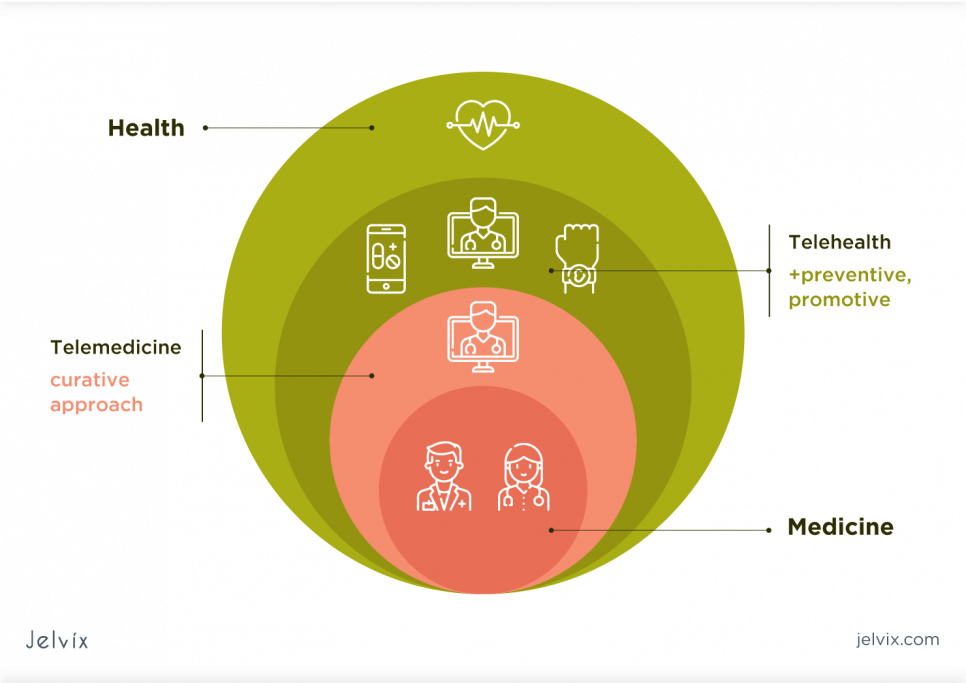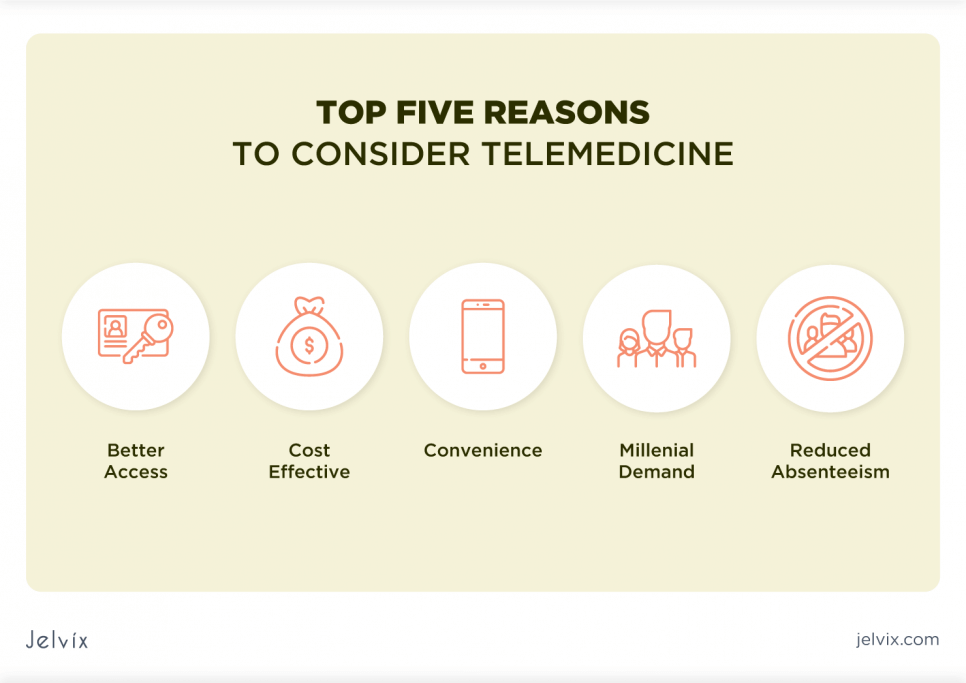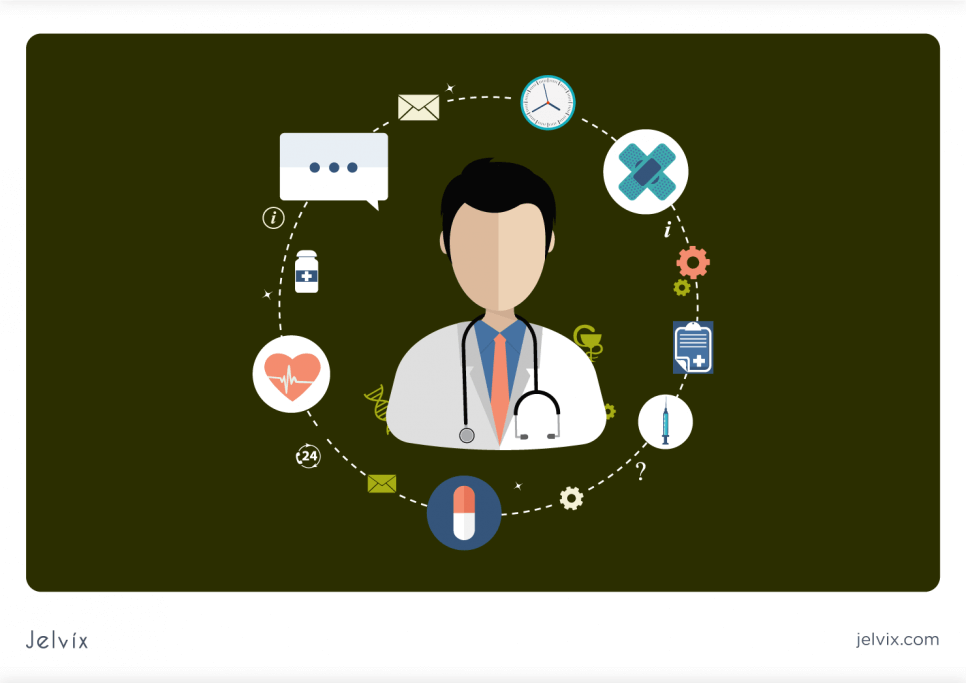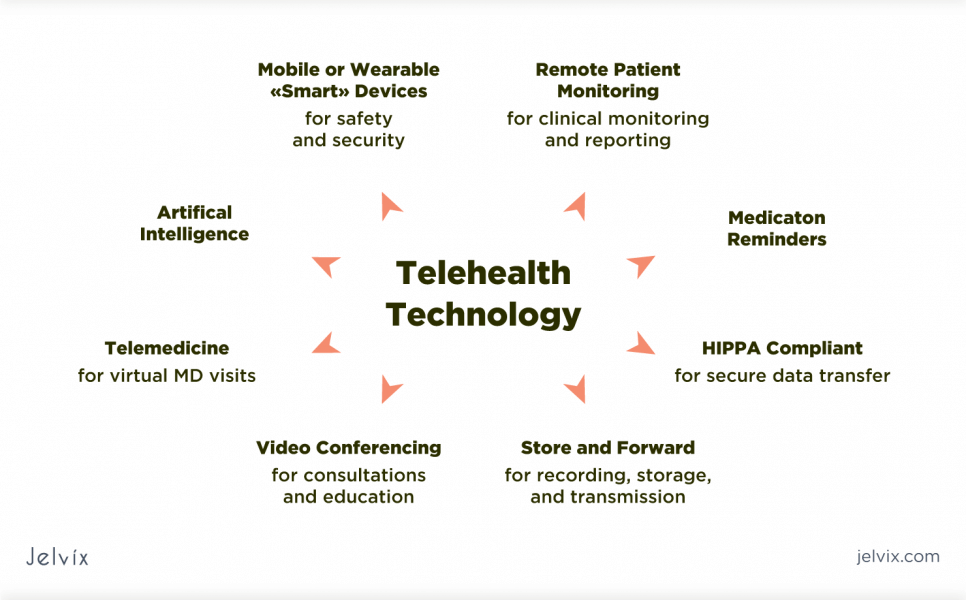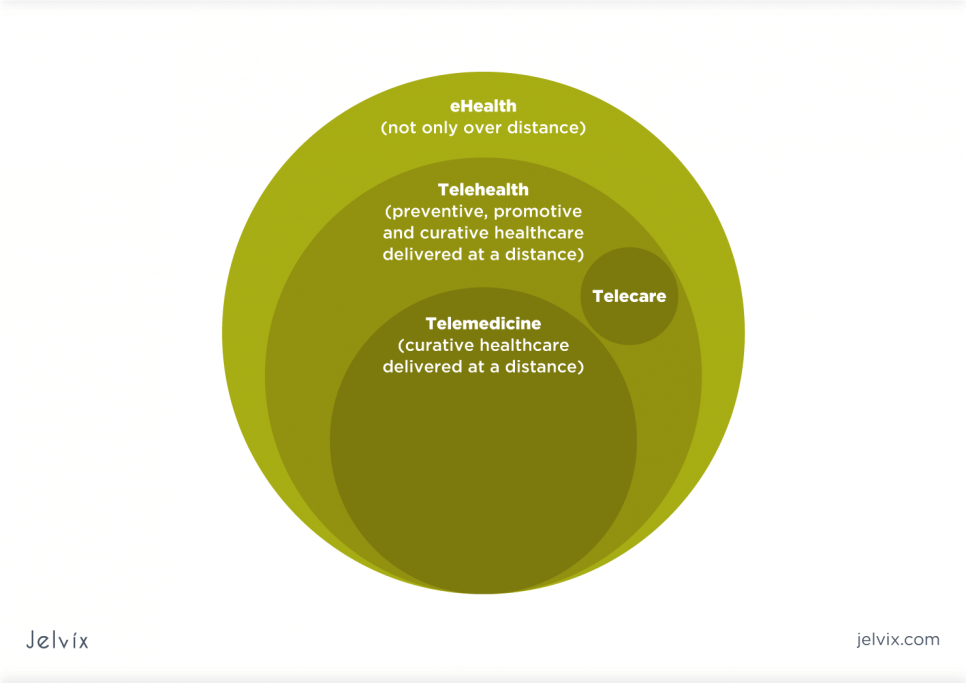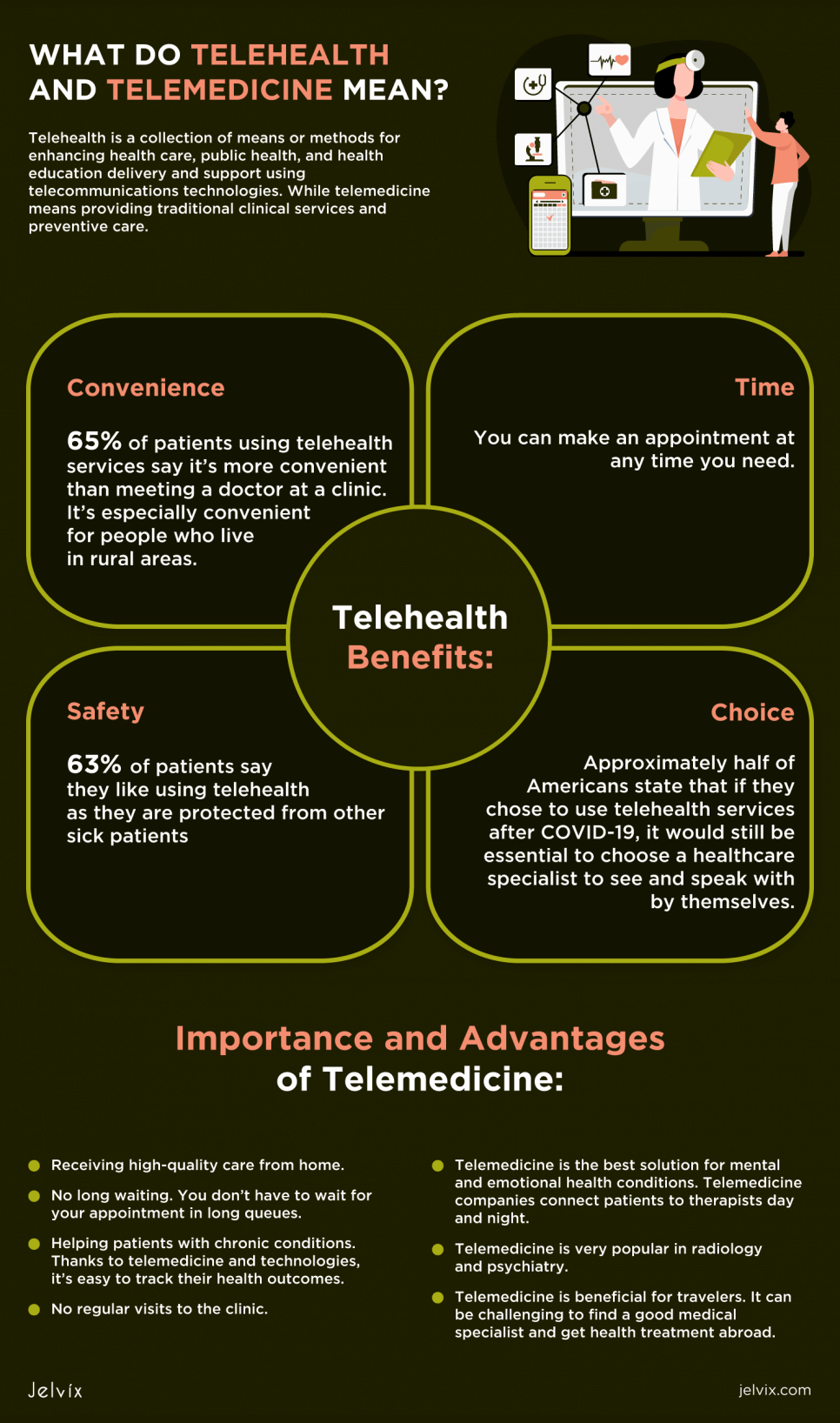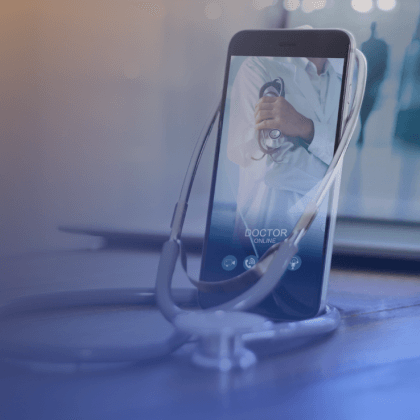Nowadays, a lot of patients and doctors use telehealth and telemedicine thanks to technologies. These remote health services are convenient, affordable, and beneficial. The difference between telemedicine and telehealth is challenging to understand for average patients. People tend to think that they are synonymous. Both terms mean giving access to healthcare via technology. Still, there is a subtle difference between the two.
This article explains what telemedicine and telehealth mean and how to use these terms correctly.
What Do Telehealth and Telemedicine Mean?
First, let’s have a closer look at these terms. Both have the prefix “tele-.” It means using some communication device to perform healthcare services. But, you shouldn’t consider all distant health services as telehealth or telemedicine.
Now we should analyze how different sources define these terms.
Telehealth vs Telemedicine
According to The Health Resources Services Administration, telehealth is “the use of electronic information and telecommunications technologies to support long-distance clinical healthcare, patient and professional health-related education, public health and health administration.” It states that telehealth includes non-clinical medical services while telemedicine means providing only traditional clinical services.
The World Health Organization states that telemedicine also includes preventive care. The Center for Connected Health Policy mentions that telehealth uses different technologies and strategies to provide remote health and education services.
Referring to The California Telehealth Resource Center, “Telehealth is a collection of means or methods for enhancing health care, public health, and health education delivery and support using telecommunications technologies.”
American Telemedicine Association considers telemedicine and telehealth as transfer of images, medical consultations using patient portals, video conferencing, remote control, vital signs monitoring, and apps.
Telecare is another related term. It means the use of technology, such as fitness apps, tracking tools, and reminders.
Difference Between Telehealth and Telemedicine
To begin with, telehealth is a broader term than telemedicine. Telehealth involves non-medical services, while telemedicine provides only remote medical care. Although, it’s wrong to think that telemedicine comes down to making diagnoses. It has currently expanded to monitoring chronic conditions and mental health.
Telehealth technology
Telehealth can use any technology that enables it to store, analyze, and share information. Telehealth technology is a broad category. It includes practice management systems, patient portals, and mobile health applications.
Telemedicine technology
Telemedicine includes the use of telecommunication systems for doctors. It helps to see their patients via video or still images. For instance, a radiologist can read patients’ results if there isn’t a radiologist in the area where the patients live. For example, you can make a video appointment with a doctor if you have a sore throat.
The doctor examines your problem and provides a treatment plan. Video consultations have a lot of benefits. Your doctor can hear out all symptoms directly from you, not from the mail he/she may receive long after your previous consultation with a doctor. Another doctor can see the results of the health examination through your doctor’s video connection. This allows doctors to make a quick assessment of your problem and prescribe treatment.
Types of Telemedicine
- Store-and-forward telemedicine implies sharing necessary patient information and images with another specialist. It’s popular in radiology, dermatology, and ophthalmology. If store-and-forward telemedicine has a proper structure, it can deliver better service.
- Telemonitoring means using a variety of technologies for remote monitoring. Patient’s devices collect all necessary health information, such as blood pressure or temperature. It allows healthcare specialists to track patient’s vital signs at a distance. Remote monitoring helps treat patients with chronic conditions, such as diabetics.
- Real-time telemedicine provides urgent medical advice to patients who need it. Providers and patients meet face-to-face in real-time thanks to video conferencing software. It’s helpful for patients because they don’t need to spend time traveling. Online consultations help specialists make an immediate diagnosis. It’s common for managing chronic illness, primary care, and follow-up visits.
Read more about the role of app development companies in medical diagnostics.
The Importance of Telemedicine During COVID-19
Coronavirus pandemic forced doctors to look for distant ways of providing health care. Telemedicine seems the best solution in this situation. It minimizes contact with medical facilities, doctors, and other patients. Thus, it prevents the virus from spreading.
In China, online surveys helped specialists to provide remote healthcare services. As a result, the telemedicine market has grown during the crisis.
Telemedicine Market Growth During the COVID-19 Pandemic
US telemedicine companies experienced an increase in demand for medical care. In comparison to the previous year, they demonstrated high growth during the pandemic. It has had a positive impact on the market.
How will the size of the telemedicine market change in the future?
According to forecasts, the U.S. telemedicine size will grow to 64 billion dollars by 2025. The market is likely to grow every year in the future. Telemedicine’s popularity and demand for it are rising.
Importance and Advantages of Telemedicine
Although the popularity and importance of telemedicine have increased due to the coronavirus crisis, 83% of patients want to use it even after the COVID-19 crisis. It isn’t surprising because telemedicine has a lot of advantages.
- Receiving high-quality care from home. In some cases, it’s even possible to get a written prescription. All you need is a smartphone with a good camera because you may want to show pictures to your doctor.
- No long waiting. Another advantage is that you don’t have to wait for your appointment in long queues. Also, you spend neither time nor money on traveling to a clinic. It could still be necessary to visit a clinic, but telemedicine can help eliminate some of the diagnoses without in-person appointments.
- Helping patients with chronic conditions. For instance, diabetes poses a serious threat to public health. Telemedicine companies strive to help such patients track their health. Thanks to telemedicine and technologies, it’s easy to track their health outcomes.
- Telemedicine is the best solution for mental and emotional health conditions. Telemedicine companies connect patients to therapists day and night, which often is extremely beneficial, as just phone conversations and video calls make them feel much better.
- Telemedicine is very popular in radiology and psychiatry. There is no need for the physician to be present to do X-rays. In psychiatry, a phone or video chat makes delivering remote care easy.
- No regular visits to the clinic. Thanks to remote monitoring, there is no need to visit doctors to do medical check-ups. You can contact your doctor and check your treatment plan from wherever you are.
- Telemedicine is beneficial for travelers. People can face problems with health while traveling. It can be challenging to find a good medical specialist and get health treatment abroad. Arguing with insurers also can cause much trouble. According to a study conducted by the Journal of Travel Medicine, about 60% of travelers are enthusiastic about telemedicine and telehealth.
How to Use Telemedicine
First, you need to download a particular app such as LiveHealth. You can also get a telemedicine number at a primary care physician’s office or from your employer. Then you should share symptoms and medical history before contacting a doctor. The patient will receive the health evaluation and instructions.
Best Telemedicine Platforms and Apps
Nowadays, telemedicine offers patients different ways to access remote medical care. You can use any device, such as a smartphone or a laptop, to meet a doctor. Teleprovider connects a patient with a specialist so that they can communicate.
Telemedicine applications, such as doxy.me and AMC Health, allow doctors and patients to interact via a video chat. They can share photos, discuss symptoms and treatment. Telemedicine is instantly accessible and available 24 hours a day. Medical practice management software, such as Greenway, also provides telemedicine.
Medical billing platforms like DrChrono Medical Billing ensure insurers get payments. The telemedicine platform you choose should work well with the medical service used before.
Examples of Telemedicine
Not all video conferencing is telemedicine. For instance, it is telemedicine if the videoconference is between a patient and a doctor. If it is between a high-class surgeon and medical students, then it is telehealth because the service is non-clinical.
You can’t consider all store-and-forward services as telemedicine too. If a doctor is looking at a patient’s X-Ray to make a diagnosis, it is telemedicine. If we are considering making a presentation based on academic publication, it is not.
You can also consider most mobile health services as telemedicine because they allow doctors and patients to interact with each other to treat and prevent illnesses.
Goals of Telehealth
- Solving the problem of doctor shortages. Telehealth allows patients at small hospitals to access specialists from larger hospitals. As a result, people who live in rural and isolated areas can receive quality healthcare easier.
- Remote medical education and training. Many organizations like BoardVitals.com offer healthcare education thanks to telehealth technologies. Doctors use online educational platforms and mobile apps to develop their professional skills and prepare for important exams.
- Patient interaction. Technologies make taking control of health easy for patients. They can receive healthcare education by watching helpful videos or using mobile apps for managing health. It allows patients to keep fit, improve their emotional state, monitor chronic conditions.
- Communicating with providers. Medical staff can collaborate and share information via telehealth platforms to provide the best treatment for patients. Telehealth platforms help get consultations from specialists and provide patients access to healthcare in areas with a lack of providers.
Telehealth Benefits
Telehealth is the best option for everyone who wants to receive essential healthcare while staying at home. It’s especially convenient for people who live in rural areas. Patients don’t need to stick to the healthcare specialist’s typical schedule. They can make an appointment at any time they need. Private insurers, such as Medicare, cover telehealth services so that patients can save their money and time. The main goal of telehealth is to offer quality healthcare services to patients.
Telehealth popularity
Updox company conducted a survey and found out that the number of Americans using telehealth is increasing. According to the survey, 42% of Americans among 2000 adults have used telehealth since the beginning of the Coronavirus pandemic. 82% of people say that they like using telehealth. The survey also explains how patient preferences influenced their decision to use telehealth.
- Convenience. 65% of patients using telehealth services say it’s more convenient than meeting a doctor at a clinic. 44% think that it’s easy to make an appointment thanks to telehealth. 51% say that if they continued using telehealth after COVID-19, convenience would be the most critical factor.
- Safety. 63% of patients say they like using telehealth as they are protected from other sick patients.
- Choice. Approximately half of Americans state that if they chose to use telehealth services after COVID-19, it would still be essential to choose a healthcare specialist to see and speak with by themselves. 49% prefer that someone assign a professional to them.
Male and female preferences
The survey shows that more men (47%) prefer to use telehealth than women (38%) since the COVID-19 pandemic started. Men (41%) and women (28%) choose telehealth for its cost-efficiency. 72% of men and 54% of women stated that they like using telehealth because they don’t have to contact other sick patients.
The age of telehealth patients is important
Patients’ age also plays an important role in making a choice to use telehealth. Americans aged 18 to 44 (52%) are more likely to have used telehealth than those older than 45 since the pandemic started. Patients aged 55+ claim that it would be more convenient for them to use telehealth if they didn’t need to download any special mobile applications or programs.
Why is telehealth becoming so important?
The United States population is increasing and getting older. Americans are more likely to develop chronic illnesses, which causes an increase in demand for healthcare. Also, there is a lack of licensed healthcare providers. Telehealth technologies can increase the effectiveness of the healthcare system and maximize providers’ productivity.
Telehealth Predictions
Michael Morgan, the chief executive officer at Updox, states that after COVID-19, telehealth will be vital for business. Virtual care is going to change the way of delivering healthcare taking into account current patient preferences. Nowadays, healthcare specialists are already looking for modern ways to increase patient engagement and make efficient connections between patients and their trustworthy doctors.
Examples of Telehealth
Telehealth services include consultations, video conferences, health text messages, health education, etc. During the COVID-19 pandemic, the list of Medicare telehealth services has expanded.
Patient portal. There may be online patient portals at primary healthcare clinics. These portals serve as a secure alternative to e-mails. They allow sharing of confidential health information. The portal allows to:
- talk to your doctor;
- request prescription medication refills;
- read test results and resumes of earlier visits;
- plan future appointments and set reminders.
Online doctor appointments. Making virtual appointments with a doctor is possible at some clinics. Patients receive consistent healthcare from a usual doctor when it is impossible to visit a doctor in person. Other online appointments include visiting a nurse through the web. As a rule, such services are similar to services provided at clinics.
After logging in to a web service, you should answer a range of questions. Then the doctor may make a prescription, give recommendations about home care, or advise on other medical help.
Distant monitoring. Different technologies allow doctors to monitor patient’s health at a distance. Here are some of the examples of such technologies:
- Web or mobile health applications allow uploading health information and sharing it with a doctor. For instance, people with diabetes use such apps to track carbohydrates and glucose. They use this information to make reports about blood sugar levels in their organism.
- Devices for measuring and wireless transmitting of the health data – like lung function or blood pressure.
- Wearable technologies with the automatic record and transmission of information, such as physical activity, heart rate, and sleep schedules.
- Home monitoring devices for older people to notice changes in their state of health.
Telemedicine vs. Telehealth Services
People tend to think that telemedicine is a kind of telehealth. If you want to understand the difference between these two services better, you should consider telemedicine in terms of telehealth delivery. They include video conferencing, store-and-forward services, mobile health, etc.
Telehealth or Telemedicine?
By now, you can see the difference between telemedicine and telehealth clearer. Telehealth involves a lot of different services. They include various disciplines, such as psychiatry, cardiology, home health, etc.
Telemedicine is a narrower term than telehealth; therefore, it is easier to understand. It is restricted to providing only clinical health services via telecommunication technologies. Video-based encounters allow doctors to do everything patients and doctors do at a regular clinic. The only difference is that they are physically not in the same place. Telehealth offers a wider variety of administrative, educational, and other non-clinical services.
While telemedicine focuses on the clinical aspects of remote healthcare delivery, telehealth encompasses a broader spectrum, including educational and administrative services. The Healthcare software development team at Jelvix is adept at creating platforms that facilitate both, ensuring comprehensive care and support for patients and healthcare providers alike.
In a nutshell, if you can’t attribute something to telemedicine, then it is telehealth. Telehealth means “to telecare” while telemedicine means “to telecure.”
Need a qualified team of developers?
Reach top talent pool to handle end-to-end delivery of your project.



